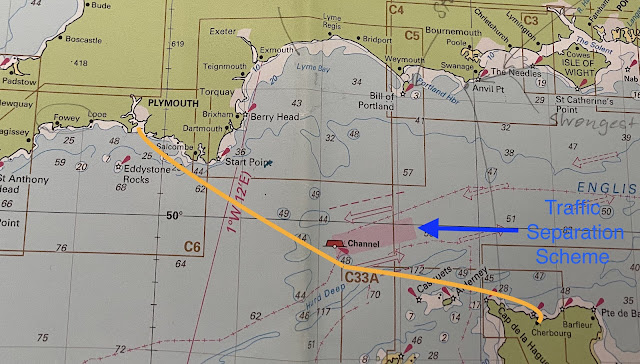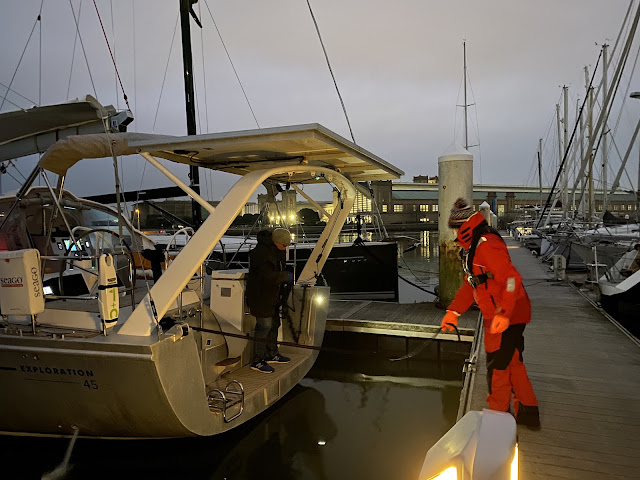Crossing The Channel - 49° 49' 40" N 02° 58' 35" W
Sailing to another country is always fun and particularly so when you have crew aboard who are doing it for the first time. Make that passage a crossing of the English Channel and it is truely exciting! Crossing The Channel, no matter how many times you have done it, requires some planning. Not only does it have some of the busiest shipping lanes on the globe, it also has some of the zippiest tides. Add in a bit of winter weather and you can understand why so many shipwrecks litter its shores.
 |
| Our proposed route from Cherbourg to Plymouth - skirting under the Casquets TSS |
 |
| The tidal stream diagrams show, from High Tide Dover, what the currents are doing. YOIKES! Beware of arrows in the wrong direction! |
 |
| Casting off the lines - decked out in our warmest gear |
In a moderate breeze, we hoisted the main and headsail, picked up the current and soon found ourselves cracking along at a blistering speed of 13.3kn (26km/hr). With only 10kn (20km/hr) of wind, the current was contributing to a lot of this speed ... very pleased that we timed the tides correctly! The winds started to drop and with the current drawing us down onto the island of Alderney, we started the engine.
 |
| Smokin' along! (SOG means speed over ground which includes the current) |
Safely through the strongest of the currents and past the TSS, we turned towards Plymouth and our next challenge, negotiating the ships heading up and down The Channel.
 |
| The English Channel and its steady stream of ships |
With our fancy electronics, it is straight forward to pick up the ships and determine if they are going to plough into you. With a cruising speed of around 20kn (40km/hr) they come up on you very quickly. We prefer to give them a wide berth and pass to their stern. The trick is to find the gap to slip through the steady stream of ships.
 |
| Even when passing at a safe distance (this was roughly a nautical mile), they are huge! |
The rest of the voyage was mostly uneventful. The wind was light, the seas were slight and our crew were very stoic in the cold conditions. We arrived in Plymouth Harbour in the dark and negotiated our way through the harbour and up the Tamar River and dropped anchor in the calm of the beautiful Lyhner River.
 |
| Chilly but cheerful - our crew more used to the tropics than southern England in the winter! |
We awoke to a beautiful sunny morning and were welcomed by the locals. After a leisurely brunch, we up anchored and motored back into Plymouth and the Queen Anne Battery Marina.

Well done. Love reading about your adventures.
ReplyDelete